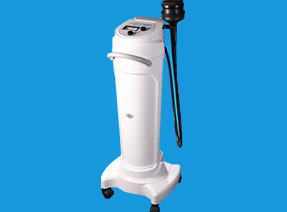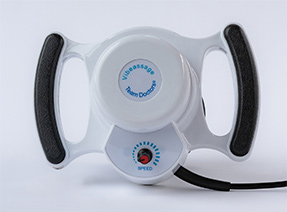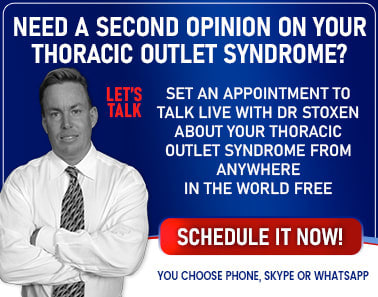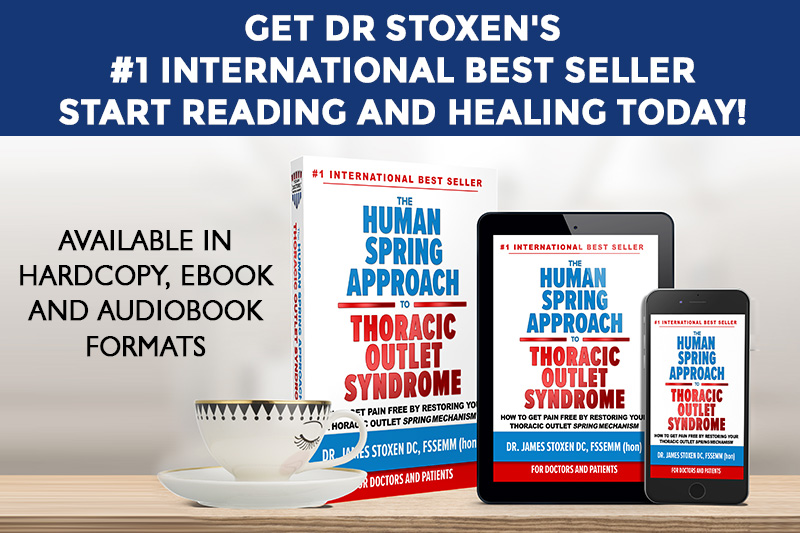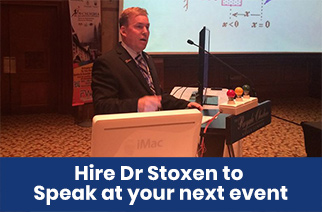THE HUMAN SPRING APPROACH TO
THORACIC OUTLET SYNDROME
by Dr James Stoxen DC., FSSEMM (hon) FWSSEM
GLOSSARY
N
Naprapathy – a system of treatment by manipulation of connective tissue and adjoining structures and by dietary measures that is held to facilitate the recuperative and regenerative processes of the body.
National Institutes of Health (NIH) – a part of the U.S. Department of Health and Human Services, is the largest biomedical research agency in the world.
National Library of Medicine (NLM) – on the NIH campus in Bethesda, Maryland, is the world’s largest biomedical library and the developer of electronic information.
naturopathic doctor – doctors that practice naturopathic medicine focusing on a holistic, proactive prevention and comprehensive diagnosis and treatment.
naturopathic medicine – primary health care profession, emphasizing prevention, treatment and optimal health through the use of therapeutic methods and substances, which encourage the person’s inherent self – healing process, the vis medicatrix naturae.
neck compression – caused by any condition that puts pressure on your neck such as muscle tension
neck exercises – the activity of exerting your muscles of your neck in various ways to improve resting tone, resist injury and for activities of daily life and sports.
neck pain – the sensation of discomfort in the neck area. Neck pain can result from disorders of any of the structures in the neck, including the cervical vertebrae and intervertebral discs, nerves, muscles, blood vessels, esophagus, larynx, trachea, lymphatic organs, thyroid gland, or parathyroid glands.
neck ribs – (cervical ribs) an extra rib that arises from the seventh cervical vertebra.
neck stiffness – the medical condition when one experiences discomfort or pain when trying to turn, move, or flex the neck.
needle EMG (Electromyography) measures muscle response or electrical activity in response to a nerve’s stimulation of the muscle.
Nefazodone (Serzone, Nefazodone, Dutonin, Nefadar, Serzone) is an antidepressant marketed by Bristol-Myers Squibb. It has since largely been discontinued.
negative engrams – unhealthy patterns of movement.
neoplasm – neoplasm is an abnormal growth of tissue, which, if it forms a mass, is commonly referred to as a tumor.
nerve – a whitish fiber or bundle of fibers that transmits impulses of sensation to the brain or spinal cord, and impulses from these to the muscles and organs.
nerve block (nerve block) – a short-term block, usually lasting hours or days, involving the injection of an anesthetic, a corticosteroid and other agents onto or near a nerve.
nerve bundle – an enclosed, cable-like bundle of axons (nerve fibers, the long and slender projections of neurons) in the peripheral nervous system.
nerve compression – what is nerve compression? pressure on a nerve
nerve compression syndrome (compressive neuropathy, compression neuropathy, or entrapment neuropathy) – a medical condition caused by direct pressure on a nerve.
nerve conduction study (NCS) – a medical diagnostic test commonly used to evaluate the function, especially the ability of electrical conduction, of the motor and sensory nerves of the human body.
nerve conduction velocity test (NCV) – is an electrical test that is used to determine the adequacy of the conduction of the nerve impulse as it courses down a nerve.
nerve conduction velocity test NCV test – an electrical test that is used to determine the adequacy of the conduction of the nerve impulse as it courses down a nerve.
nerve gliding – also known as neural flossing or nerve stretching) are exercises that aim to restore mobilization of our peripheral nerves.
nerve impulse – a progressive wave of electric and chemical activity along a nerve fiber that stimulates or inhibits the action of a muscle, gland, or other nerve cell.
nerve pain symptoms – a stabbing pain, a chronic prickling, tingling, or burning
nervous tics – sudden, repetitive, nonrhythmic motor movement or vocalization involving discrete muscle groups.
neurogenic pectoralis minor syndrome (NPMS) – type of thoracic outlet syndrome where there is compression of nerves by a hypertrophied pectoralis minor muscle. This syndrome usually causes pain between shoulder blades or back pain between shoulder blades.
neurogenic syndrome – there is no such syndrome as neurogenic syndrome
neurogenic thoracic outlet syndrome ((NTOS) (neurogenic tos) – the thoracic outlet syndrome that is characterized by compression of the brachial plexus.
neurogenic thoracic outlet syndrome surgery recovery – the amount of time it takes to recover from surgery for neurogenic thoracic outlet syndrome surgery
neurogenic thoracic outlet syndrome symptoms – symptoms of numbness due to compression of a nerve or nerves in the thoracic outlet
neurologic deficit – A neurologic deficit refers to abnormal function of a body area. This altered function is due to weaker function of the brain, spinal cord, muscles, or nerves.
neurological thoracic exit syndrome – a condition causing pain, numbness and tingling in the hand and arm. It often coexists with thoracic outlet syndrome (TOS) but can also occur alone. The symptoms are similar to those of TOS: pain, weakness, numbness and tingling in the hand and pain on arm.
neurologist – a specialist in the anatomy, functions, and organic disorders of nerves and the nervous system
neuromuscular electrical stimulation NMES (electrical muscle stimulation, EMS, electromyostimulation) – the elicitation of muscle contraction using electric impulses or small electric impulses are used to stimulate muscles that are weak or paralyzed. It helps to increase muscle strength, blood circulation, and range of motion and to lessen muscle spasms.
neuropathy – a disease or dysfunction of one or more peripheral nerves, typically causing numbness or weakness.
neuroscience – any or all of the sciences, such as neurochemistry and experimental psychology, which deal with the structure or function of the nervous system and brain.
neurosurgeon – a surgeon specializing in surgery on the nervous system, especially the brain and spinal cord.
neurotransmitter – a chemical substance that is released at the end of a nerve fiber by the arrival of a nerve impulse and, by diffusing across the synapse or junction, causes the transfer of the impulse to another nerve fiber, a muscle fiber, or some other structure.
neurovascular – blood vessels and nerves.
neurovascular bundle – is the combination of nerves, arteries, veins, and lymphatic’s in the body that travel together.
neurovascular compression – compression of blood vessels and nerves in the same location.
no-hitter – a complete game in which a pitcher yields no hits to the opposing team.
nociceptors – high-threshold sensory receptor of the nervous system that is capable of detecting stressful, harmful and even toxic stimuli damage by sending signals to the spinal cord and brain.
nonopoid analgesics (nonsteroidal anti-inflammatory drugs, NSAIDS) – a class of analgesic medication that reduces pain, fever and inflammation.
nonsteroidal anti-inflammatory – is a class of analgesic medication that reduces pain, fever and inflammation.
normal gait – It is a rhythmic & characterized by alternating propulsive & retropulsive motions of the lower extremities.
noxious – harmful, poisonous, or very unpleasant.
NSAID (non-steroidal anti-inflammatory drug) – is a class of analgesic medication that reduces pain, fever and inflammation.
numbness – deprive of feeling or responsiveness.

Meet Dr James Stoxen DC., FSSEMM (hon)
President, Team Doctors® Masters Academy
www.drstoxen.com
Dr Stoxen’s Curriculum Vitae
Stay connected to our thoracic outlet syndrome social media sites
1.1k
Members

READ THESE CHAPTERS OF DR STOXENS BOOK FREE HERE!
ARTICLE CATEGORIES
- Testimonials (13)
- Success Stories (13)
- Failed TOS Surgery (1)
- Thoracic Outlet Syndrome (11)
- Compartment Syndrome – Forearm (5)
- Shoulder Replacement Surgery (1)
- Cervical Discectomy (1)
- Cervical Fusion Surgery (1)
- What is TOS? (3)
- Thoracic Outlet Anatomy (1)
- Thoracic Outlet Engineering (1)
- Causes Of TOS (6)
- The TOS Examination (1)
- Diagnostic Tests for TOS (1)
- What Mimics TOS? (1)
- Paget-Schroetter Syndrome (2)
- TOS Surgery (2)
- Posture Tips (1)
- Self Treatment (1)
- What doesn’t work and why? (1)
- What works and why? (1)
- Stretches for TOS (1)
- Exercises for TOS (1)
- Surgery for TOS (1)
- Case Studies (2)
- Chapter Reviews (10)
- Uncategorized (16)
VIDEO TUTORIALS
Subscribe to our newsletter
Team Doctors® Master’s Academy
Professional Development Courses
Launching January 1, 2022!
Team Doctors® Master’s Academy
Patient Self-Care Workshops
Launching January 1, 2022!

